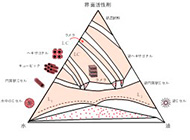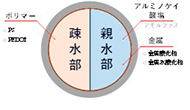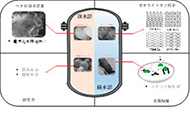- Name
- Jose Andres Hernandez Gaitan
- Affiliation and course name
- Completed the Doctoral Course in the Graduate School of Engineering Science at Osaka University.
- Degree
- PhD. (Engineering)
- Research field
- Nanomaterials design and modification for catalytic and industrial applications
- 研究課題(長期)
- Nanomaterials design and modification for catalytic and industrial applications
- 研究課題(短期)
- By using soft template methods we can create a wide range of nanomaterials (metals, polymers, zeolites) that can be specifically tailored and design for a wide range of catalytic, industrial and specialized science and technology applications.
Ryukoku University You, Unlimited
Need Help?
Faculty of Advanced Science and Technology
Jose Andres Hernandez Gaitan

Research theme
Nanomaterials have many unique improved properties such as: surface area (Sext), (σ) catalytic performance and electrical conductivity. There are two main approaches to the synthesis of nanomaterials: top-down and bottom-up. Currently, we are studying the controlled synthesis of nanomaterials by the bottom-up soft-template method.
In this specific ternary mixtures, surfactants can be disperse into specific orientations, creating variable dimensional-templates in-between the different ordering limits of liquid crystals and isotropic liquids (Fig. 1). In addition, we can choose whether the solvent inside and outside the surfactant templates will be water or an organic solvent. Hence the TDR can be hydrophilic or hydrophobic, respectively (Fig. 2).
This polymorphism characteristic allows us to tune different synthesis conditions in the reactor to obtain a wide range of nanomaterials with different morphologies.
We were able to synthesize both polystyrene and PEDOT polymers, metal oxides and aluminosilicate nanosheets.
The polystyrene and aluminosilicate were used as precursors in further synthetic paths to obtain heteroatom carbon and zeolite nanosheets, respectively. The heteroatom carbon nanoparticles are being tested in ORR reactions were we have been able to make significant improvements in the overall voltammetry of the reaction. Onset potential was reduced and half-wave potential was improved.
Furthermore, metal oxides nanoparticles were synthesized to improve the catalytic reaction of methane decomposition, increasing both yield of H2 and stability of the catalyst.


